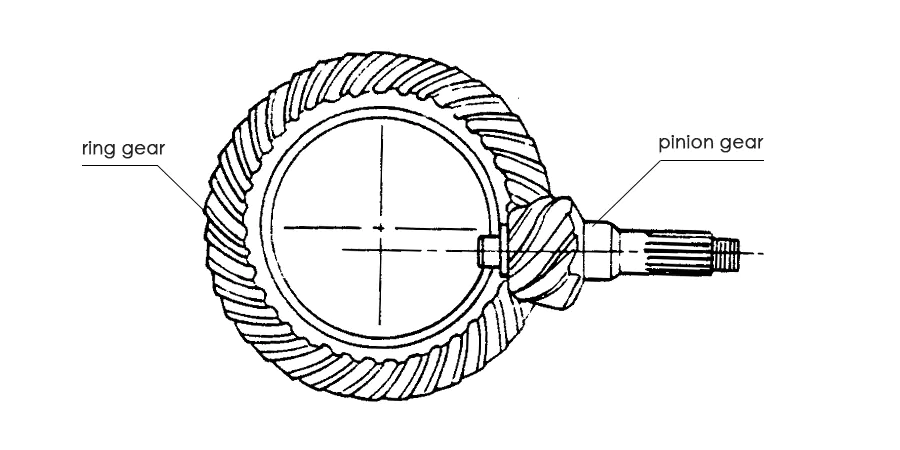In modern automotive and machinery transmission systems, gear design plays a crucial role in enhancing efficiency and extending service life. Especially in critical components like differentials, different types of gears are used to achieve optimal power transmission. Two common gear designs—equal height gears and tapered crown gears—each offer unique advantages and are suitable for different applications. In this article, we will explore the characteristics, differences, and practical applications of these two gear designs.

What Are Equal Height Gears?
Smooth engagement: Due to the uniform tooth shape, equal height gears mesh smoothly, resulting in lower noise and vibrations, making them ideal for regular driving.
Simple manufacturing process: The design of equal height gears is relatively straightforward, which means they can be produced at a lower cost, making them suitable for medium- to low-load applications.
Reliability: Equal height gears provide stable performance under normal load conditions, making them ideal for standard vehicles or machinery where high-performance requirements are not essential.
What Are Tapered Crown Gears?
In contrast to equal height gears, tapered crown gears (also known as tapered gears) feature a tooth design that gradually decreases in height from the center of the gear to its edges. This design helps improve the gear’s load-bearing capacity and transmission efficiency. Tapered crown gears have several key features:
High load-bearing capacity: The tapered design allows the gears to distribute pressure more evenly, reducing contact stress on the gear teeth and improving load-bearing capacity, making them ideal for high-load environments.
Efficient power transmission: Due to the uniform contact along the tooth surface, tapered crown gears are able to transmit power more efficiently, making them suitable for high-performance vehicles, heavy machinery, and other demanding applications.
Greater durability: The design of tapered crown gears minimizes wear and tear, extending the lifespan of the gear, especially under heavy-duty conditions.
Key Differences Between Equal Height Gears and Tapered Crown Gears
Tooth Design:
Equal height gears have a uniform tooth shape and height across the entire gear surface, leading to smooth and consistent engagement.
Tapered crown gears have a varying tooth height, with the tooth size decreasing from the center to the edges, which enhances their load-bearing ability.
Application Scenarios:
Equal height gears are ideal for everyday transmission systems with low to medium load, such as in regular passenger vehicles.
Tapered crown gears are better suited for high-load, high-performance applications, such as in racing cars, heavy-duty machinery, and off-road vehicles.
Manufacturing Cost:
Equal height gears are simpler to manufacture and, therefore, more cost-effective.
Tapered crown gears are more complex to produce, which results in higher manufacturing costs.



